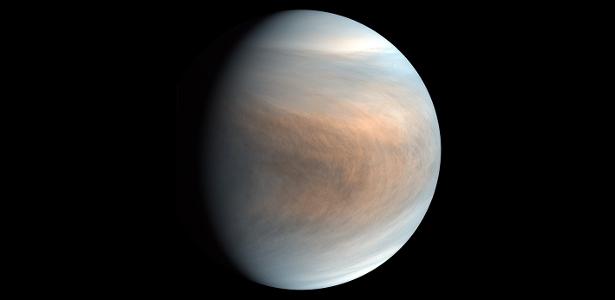Five puzzles that can be solved through missions to Venus
Because of its hostile environment, Venus remains a planet full of undiscovered secrets. Despite Earth’s proximity, the biggest investments and manifestations are still directed to Mars. Venus is a hot, poisonous planet covered by a volcano.
At the end of last year, Scientists have found evidence of bacterial activity in the atmosphere of Venus. The research was published in the popular journal Nature. The presence of phosphine on the planet can indicate the result of biological processes, and therefore living organisms.
In early June, it was NASA announced two missions, called Davinci+ and Veritas, to explore the planet, which should take place between 2028 and 2030. Europe has also agreed to its own exploration mission, EnVision. About 40 missions have already attempted to visit the planet, but its hostile environment, with extremely high temperatures and strong pressure, was a challenge to the instruments and astronauts.
The three new missions should provide answers to at least five questions about Venus, according to the journal Nature.
Why is Venus different from Earth?
The two planets are the same size and about the same distance from the sun. Venus and Earth are called ‘sister planets’, but only our planet can live on it. One of the questions scientists want answered concerns the inhospitable environment of Venus. Temperatures on the planet can reach 470 degrees Celsius, which is enough to melt lead.
Veritas and Invision intend to search for answers through geological exploration of the planet, that is, the surface. Both will seek to map the relief of Venus.
Davinci+ will measure non-reactive noble gases, such as helium, xenon, and other elements from the atmosphere. It will have an orbiter to photograph the planet using ultraviolet and infrared radiation.
Did Venus have oceans?
About 40 years ago, NASA’s Pioneer Venus project indicated that the planet has a shallow ocean. Recently, the Goddard Institute for Space Science (Giss) created a series of simulations to see if Venus has a stable climate, is able to allow liquid water, and It was found that Venus can maintain a constant temperature, between 20°C and 50°C for billions of years.
By measuring the atmosphere created by Davinci+, this mystery can be solved. The probe will take high-precision measurements to detect the gases present.
Does Venus have continents?
An article published in November 2020 in Nature indicated that 7% of the surface of Venus is covered in mountainous regions called tesserae, which remains a big mystery to scientists. One hypothesis is that they are similar structures to the continents.
Veritas aims to study the composition of small blocks and to compare the amount of basaltic igneous rocks in areas of different elevations. “On Earth, when continents form, large amounts of basalt in the oceanic crust dissolve in the presence of water,” Susan Smrekar, VERITAS mission leader, told Nature. “If we can test this hypothesis, we can show that these massive plateaus are effective fingerprints of a time when there was water,” as the continental land masses that were once surrounded by water were.
The Davinci+ spacecraft may also help understand more about tesserae as it descends over Alpha Regio, a large-scale Venusian plateau. Expect up to 500 additional images of the surface to be obtained in the few minutes that it can survive under high temperatures and pressures.
Does Venus still have active volcanoes?
Surface mapping conducted by Veritas and EnVision aims to explore the planet’s volcanic regions and provide high-resolution images. The two instruments will look for evidence of volcano-related elements, such as lava. To this day, it is unknown whether the volcanoes of Venus have been active for thousands of years – or whether they are still today.
The Japanese probe Akatsuki, launched in 2010, noted changes in the amount of ultraviolet light absorbed by Venus’s atmosphere, which may be an indicator of recent volcanic activity.
Do you have phosphine on Venus?
The study that revealed the presence of phosphine in Venus’ atmosphere may have stronger evidence with the da Vinci+ mission. There is a lot of controversy over the results of the research published in the journal Nature, so the new mission will attempt to more accurately measure the element’s presence on the planet.

“Incurable thinker. Food aficionado. Subtly charming alcohol scholar. Pop culture advocate.”






More Stories
NASA Releases Selfie of Perseverance Rover Working on Mars
NVIDIA driver includes hidden Final Fantasy XVI profile
PlayStation Plus Extra and Premium saw a significant drop in players in July